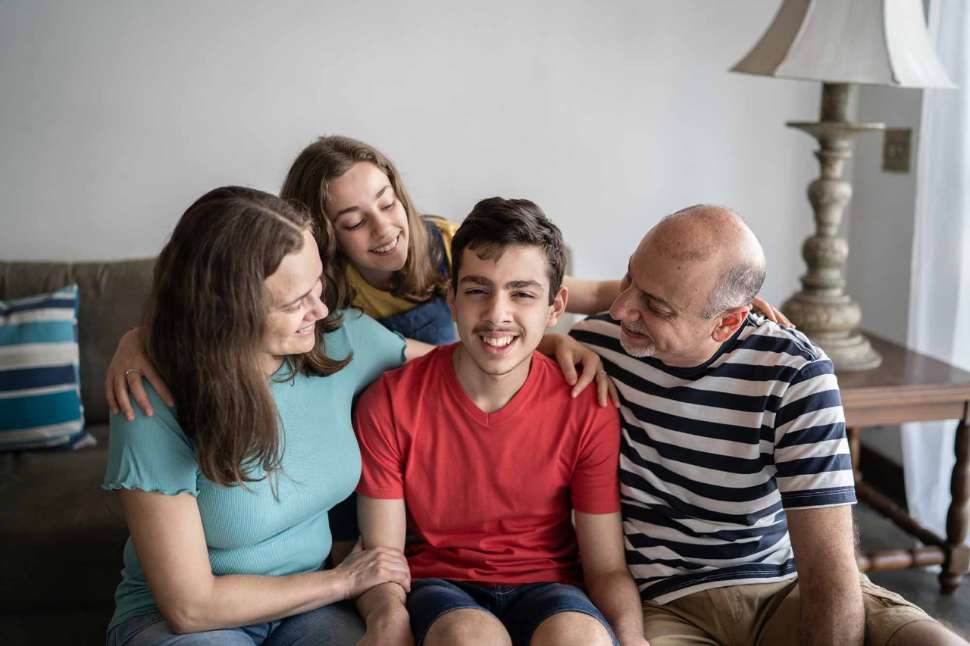Improvements to early detection methods for Autism Spectrum Disorder provide the key to better care, opportunities and quality of life.
Autism Spectrum Disorder (ASD) affects approximately one in 40 people in Australia, according to new figures from Aspect (Autism Spectrum Australia), and has a wide-ranging effect on a person’s life. The disorder effects social interaction, communication, and behaviour, leading to challenges in areas like learning, employment, and social integration.
However, the full extent of how this condition affects a person are not clearly understood.
Improvements to early detection methods provide the key to better care, opportunities and quality of life for people with autism, and this provides the focus for several areas of research being undertaken at Flinders University.
The Autism Research Initiative at Flinders, led by Professor Robyn Young, studies people with autism across all ages, with projects providing tangible support through the development of an early screening tool, an intervention manual and a book to assist parents and educators.
Eye scans offer early detection advances
A promising new method of detecting autism is being developed through a simple eye scan, which could identify the condition years earlier than is currently possible.
The eye study for autism commenced over a decade ago, when Flinders optometry expert Dr Paul Constable started looking for an autism eye-biomarker, a journey shaped by his son’s experiences surrounding an autism diagnosis at the age of three.
Dr Constable and colleagues are now developing a wearable medical device – the SmartERG – that can record electrical signals in the retina to use as a biomarker for neurodevelopmental disorders including ASD, attention deficit hyperactivity disorder (ADHD), and people with co-occurring ASD and ADHD.
The device uses a smartphone to record and store data for analysis and sharing with health care professionals, to enable a more prompt analysis of people suspected of having this condition.

Building public education about autism
As a strident advocate for broader public education about autism, Professor Young also has an important role on the board of Australian Advisory Board on Autism. She is directing research projects that examine why people with autism are more vulnerable to damaging social problems such as homelessness and being misunderstood in the hospital system because they can’t properly articulate their pain threshold, which means they are not being treated properly.
“Autism is a serious condition that has a massive impact on people’s lives, and we want to minimise the impact,” says Professor Young.
“Autistic people in our community can do great things; neurodiversity can bring skills that other people can’t even begin to imagine, so we have to work together to ensure their experiences are more positive.”
Defining gender diagnosis differences
Existing tests used to measure traits of ASD are based on research involving male participants – and fail to recognise that young females present autism traits differently.
It means that girls with autism tend to be diagnosed later than boys, largely because they can present with different characteristics than those classically related to autism. Girls are also very good at camouflaging problems, known as masking, to mimicking other’s behaviour.
It results in many females with autism remaining hidden within the health system and not receiving the diagnosis and support they need.
“We need to better understand the unique challenges of girls so that we can improve our diagnostic assessment processes,” says Professor Young.
“This is important because there is a strong relationship between delays in diagnosing, camouflaging and poor mental health.”
Engaging children with autism at school
LEGO therapy uses toy bricks as a tool to help autistic children interact through play and develop their communication and social skills – and Flinders researchers have found that LEGO Robotics therapy may be an effective drawcard for children with autism to come to school.
Researchers found the LEGO Robotics therapy program reduced the anxiety levels of autistic teenagers while improving their social skills, motivation and school engagement. It therefore has the potential to reduce school absenteeism for autistic teenagers, which is currently three times higher than their peers – and is another way Flinders researchers are helping people with autism to engage more completely in all aspects of life.
“Autistic people in our community can do great things; neurodiversity can bring skills that other people can’t even begin to imagine, so we have to work together to ensure their experiences are more positive.”
- Professor Robyn Young
Flinders University
![]()
Sturt Rd, Bedford Park
South Australia 5042
South Australia | Northern Territory
Global | Online
CRICOS Provider: 00114A TEQSA Provider ID: PRV12097 TEQSA category: Australian University








